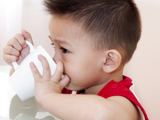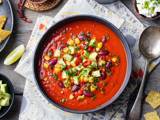Vegetables can be quite bitter; particularly some green, leafy vegetables such as broccoli, kale or cabbage. Young children are very sensitive to bitter flavours and prefer sweeter foods. This means that they might be ok eating some sweet and tasty fruit but push their vegetables to one side, or even onto the floor!
Just eating fruit can mean that kids could miss out on some of the nutrients found in higher amounts in vegetables, as well as the opportunity to enjoy the varied dishes where vegetables are found – so it’s important that they have a variety of both in their diet.
Food ‘neophobia’ – the fear of new things - is also a problem between the ages of 2 and 6 years. Neophobia is common at this stage in life and simply means that a child will usually turn their nose up at a new food. This can be a key reason young children tend to say no the first time you try to introduce something they are not used to, but it does not mean they won’t learn to like it.
There are many ways that parents often use to try and get their kids to eat vegetables, but some are more effective than others. Coercion or force-feeding strategies, for example, can make both child and parent stressed and lead the child to like the vegetable even less! Similarly, using treat foods as a reward also seems to make children like the vegetable even less. Not only that, but they tend to like the less healthy reward food even more afterwards.
Hiding vegetables in foods can be a way to get children to eat vegetables with less fuss, as they do not notice them when eating. The problem is that because the child does not see the vegetables, they do not learn to like them on their own and may still reject them later.











